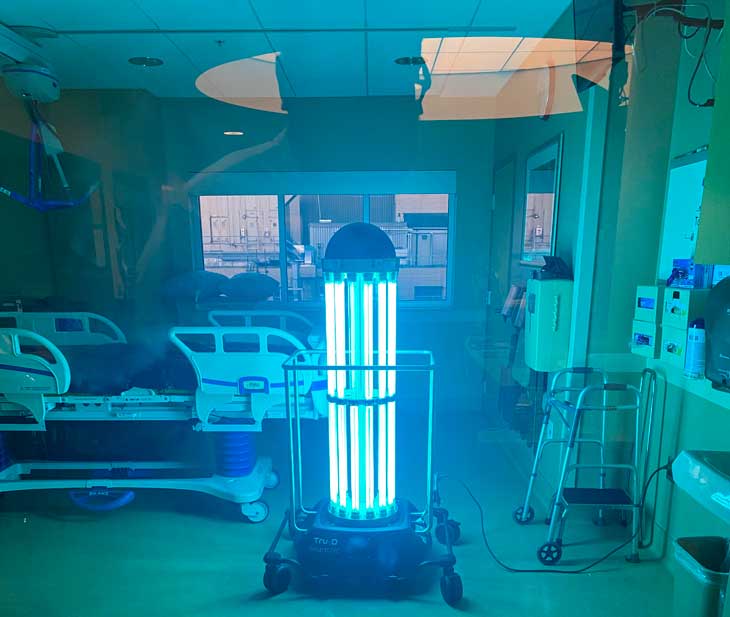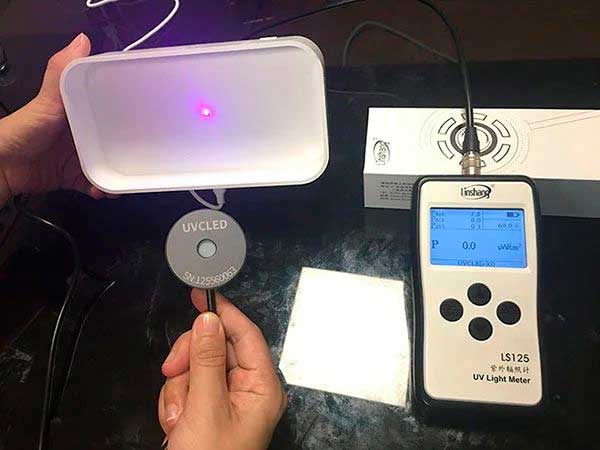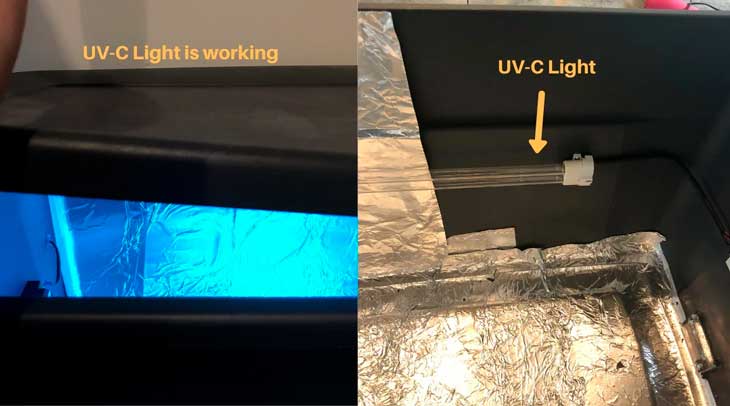In the modern day and age, thoughtful and aware people find new ways to make their lives easier while also working for the benefit of the planet.
We should also be very mindful of how quickly microorganisms, infections, and sicknesses can spread. In this case, more and more people are asking the question – can LED light become a new way of killing the germs? Let’s find out.
Advancements in Antimicrobial LED Lighting

With advancements in lighting science and microbiology, the science of antimicrobial LED lighting options treats harmful microorganisms in the air and on surfaces.
These products provide an unobtrusive disinfecting option while meeting the lighting requirements for commercial applications. What’s impressive, or becoming the norm today, is that as these lights run, they are sanitizing microorganisms, microbial growth, and spores from the air and surfaces.
These disinfecting lights, safe for occupied spaces, are human-friendly and are integrated into your lighting system to disinfect continuously.
They can be installed in different spaces, even in warehouses, schools, and other large settings. Researchers have known for a really long time that the expansive range UVC light, which has a frequency of between 200 to 400 nanometers, is profoundly effective at killing microbes and infections by destroying the molecular bonds that keep their DNA intact.
Even though research on how UV lights kill COVID-19 is still ongoing, the pandemic has increased the use of UV light disinfection in healthcare facilities.
UV Lighting Solutions and Applications

Cleaning UV lighting solutions are supplemental to your primary lighting framework. With basic lighting controls, UV lights are capable of working with your framework, working with your particular building occupancy, and active times.
There are controls that can be programmed for holidays, seasonal hours, and any other customizations your business requires.
When it comes to killing mold, fungi, and bacteria, intensified blue light has been found to be safer than ultraviolet. Talking about green practices, LED technology uses no chemicals to disinfect, and nowadays, both business and consumer markets are drawn to this.
Experts mention that the proof of concept for LED antimicrobial lighting is the most significant obstacle because people want to see how others use it before they spend the money and confirm that it works.
And after a sufficient number of food processors or hospitals adopt it, there will be a critical mass. The adoption of LED lighting will also be beneficial.
Understanding Viruses and Bacteria

It is known that viruses and bacteria can harm the human body. Viral organisms are not living things; they require living cells, but on the other hand, bacteria can also survive outside the body and can be found in food, dirt, and house fabric.
Masks are more difficult to filter and capture because viruses are much smaller than bacteria, which are sub-microscopic.
It’s important to note that various colors of LED bulbs have different effects. White LED bulbs have the capacity to kill bacteria, mold, and fungi; at the same time, it does not harm people, plants, or pets. In particular, hospitals can use them throughout the day without people needing to vacate.
Intensified blue light is another colored light that has been proven to kill certain bacteria, like E. coli, listeria bacteria, and deactivate the MRSA virus.
As for violet, it’s a special case because separately, red LED and blue LED will both kill bacteria, so the best kind of LED light is one that combines red and blue LED light.
UV-LEDs: A Sustainable Alternative for Germicidal Treatment
LED lights also come as ultraviolet emitters. UV-LEDs are a possible alternative for replacing traditional UV light sources. As opposed to conventional UV sources, UV-LEDs are more environmentally friendly as they do not contain harmful mercury, do not produce ozone, and consume less energy.
The use of UV-C LEDs is rapidly growing in situations where germicidal treatment is required: UVGI for air, surface, and water purification.
Please remember that traditional sources of UV are quite harmful to human eyes, and when places like hospitals need to be sanitized, people have to vacate the area.
UV light, traditionally produced through mercury-vapor lamps, can lead to rapid sunburn or, in extreme cases, skin cancer.
UV-C wavelength damages the nucleic acid of microorganisms and damages their DNA, penetrating the cells, making them incapable of reproduction, and biologically inactive.
UV-C LED Efficacy and Safety in Disinfection

This photo-activation process also occurs in nature since the sun emits UV rays that have this effect as well. Fortunately, UV-C radiation can pass through air without creating ozone, so UV-C lamps can also be used in the air to disinfect surfaces.
It’s proven that UVC LED lights have a disinfection rate of up to 99%. They can kill germs, viruses, and bacteria without using radiation; no ozone is produced and there are no residual chemicals.
Antibiotics can be used to treat bacteria, but you probably already know that in order for the medication to be effective, you need to finish the entire course.
Antibiotics, on the other hand, are ineffective against viruses. In general, light can kill nearly everything: microorganisms, organisms, infections. It is effective even against infections like influenza.
Research Insights into UV Light and Virus Inactivation

The researchers then produced droplets containing HIV or coronaviruses to resemble the typical public viral exposures of coughing, sneezing, and bleeding.
The beads were exposed to UV light and placed in a culture to check whether any of the infection remained active. With only 30 seconds of exposure, the capacity of the infection to infect dropped by 93%.
The researchers tested the viruses at various concentrations and discovered that samples with more viral particles were more resistant to UV light.
Even though the lights themselves aren't safe, UV radiation harms nucleic acid and can be harmful when used repeatedly and for a long time.
Researchers state that it could be used in public spaces that are empty, like empty elevators moving between floors or buses that have finished their routes.
Practical Applications and Considerations of UV Usage
As we can see, UV light can be very effective at killing viruses in different spaces and, in the modern age, researchers are finding more and more ways to make it ecological, safe, and effective.
Keep in mind that even when UV light is used to kill viruses, it can also cause severe burns to the skin and damage to the eyes, and hygiene basics will always be useful and irreplaceable. Thoughtful implementation of LED alternatives on the market can help make our lives easier.